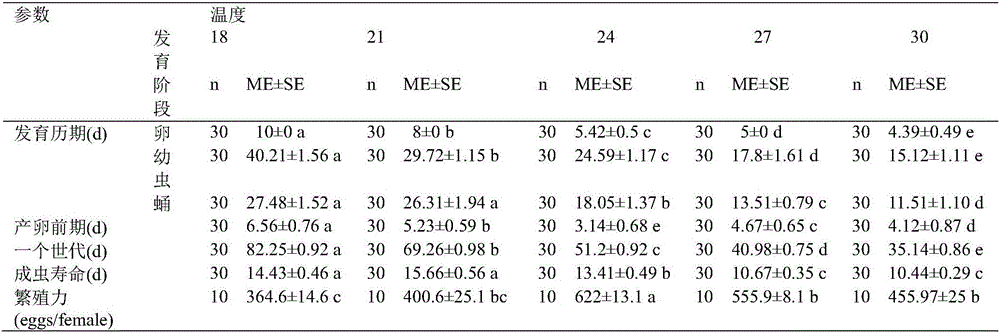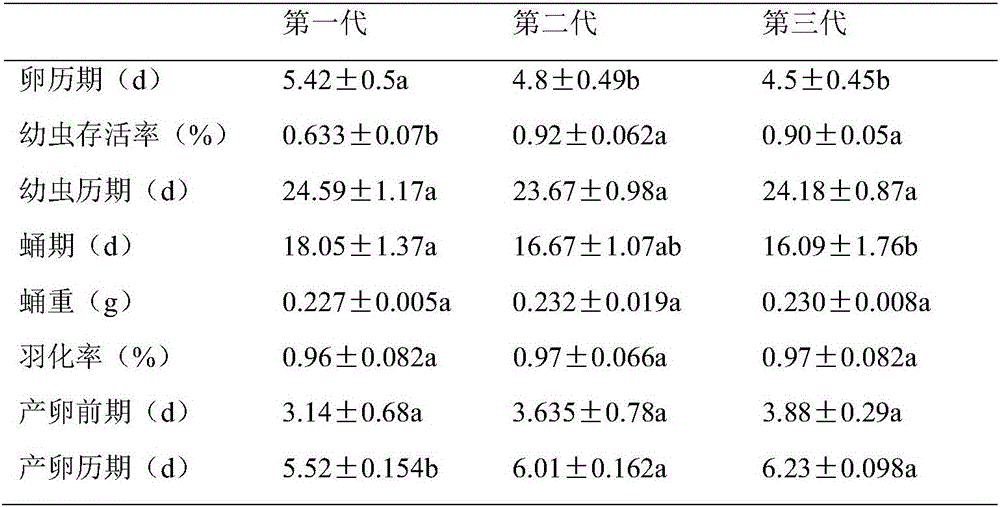Leucania loreyi breeding method
A technology for Lloyd's armyworm and larvae, which is applied in the field of raising the main crop pest L. armigera, can solve the problems of no relevant reports on the feeding method, insufficient attention to research, and the like, and achieve simple and convenient feeding and high egg production. , the effect of high survival rate
- Summary
- Abstract
- Description
- Claims
- Application Information
AI Technical Summary
Problems solved by technology
Method used
Image
Examples
Embodiment Construction
[0019] The present invention will be further described in detail below in conjunction with the examples.
[0020] Embodiment (raising condition: temperature 24 ℃, photoperiod: dark period=14:10h, humidity 70%, and all are constant)
[0021] 1) Egg hatching: Take out the eggs of Armyworm Lloyd’s worm stored at 4°C and put them into a glass bottle, add enough fresh young corn leaves to moisturize the bottle, replace the corn leaves every two days, and turn off the eggs when they are found to turn black. It is about to hatch, and the corn leaves can no longer be replaced at this time. To prevent the hatched larvae from being lost, only corn leaves can be added inside.
[0022] 2) 1-3 instar larvae: The larvae in this stage basically do not eat, as long as the corn leaves in the bottle are fresh, you can cover the bottle with a wet towel for multiple moisturizing. Try not to subpackage the larvae at this stage to avoid man-made mechanical damage. The age of the larvae is general...
PUM
 Login to View More
Login to View More Abstract
Description
Claims
Application Information
 Login to View More
Login to View More - R&D
- Intellectual Property
- Life Sciences
- Materials
- Tech Scout
- Unparalleled Data Quality
- Higher Quality Content
- 60% Fewer Hallucinations
Browse by: Latest US Patents, China's latest patents, Technical Efficacy Thesaurus, Application Domain, Technology Topic, Popular Technical Reports.
© 2025 PatSnap. All rights reserved.Legal|Privacy policy|Modern Slavery Act Transparency Statement|Sitemap|About US| Contact US: help@patsnap.com



